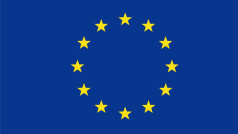4. Commercial and industrial waste
A truly circular economy will not be created if only municipal waste is taken into account. Commercial and industrial waste (C&I waste) should be included in the scope of the Circular Economy proposals as it is a much larger source of resources. FEAD believes that the Commission should examine the possibility of taking measures to incentivise a more circular economy for commercial and industrial waste in the future, and as a first step should require Member States to put in place better data gathering on commercial and industrial waste. To achieve a circular economy, the EU needs to know more about flows of commercial and industrial waste so as to ensure that these can be efficiently re-injected into the European economy. Today, the absence of reliable statistics on C&I waste remains a significant barrier.
The EC should also assess how commercial and industrial waste can be clearly distinguished from municipal waste (household and similar waste) in order for the Member States to report to EUROSTAT in a comparable way. One method of doing so would be to set a maximum weight/quantity for municipal and similar waste to be collected on a weekly/monthly basis for this waste to qualify as municipal waste. Above that threshold, collections would be considered as commercial and/or industrial waste. Alternatively, the EC could set a yearly maximum threshold of municipal waste generation per capita, above which waste could only be qualified as commercial and/or industrial waste.







